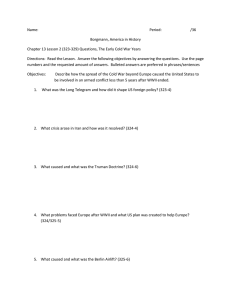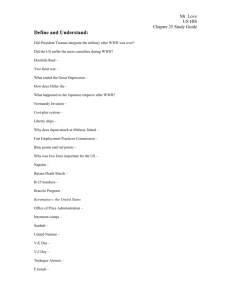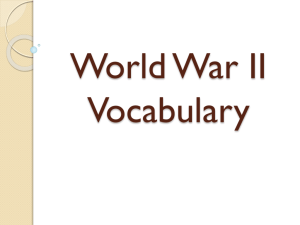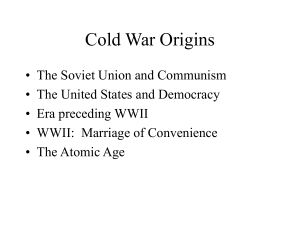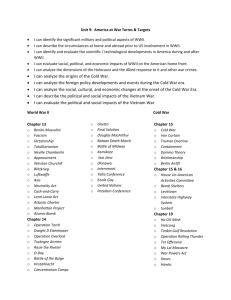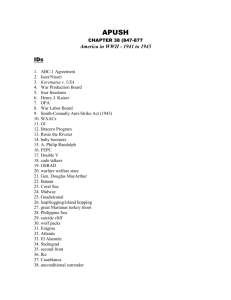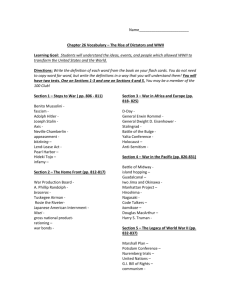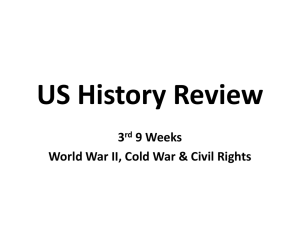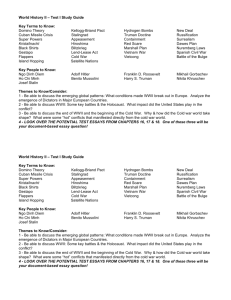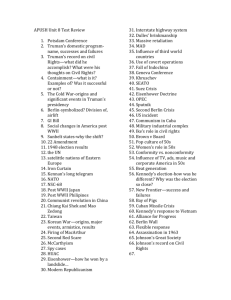Fair Deal/Containment Notes You notice that your book calls the
advertisement
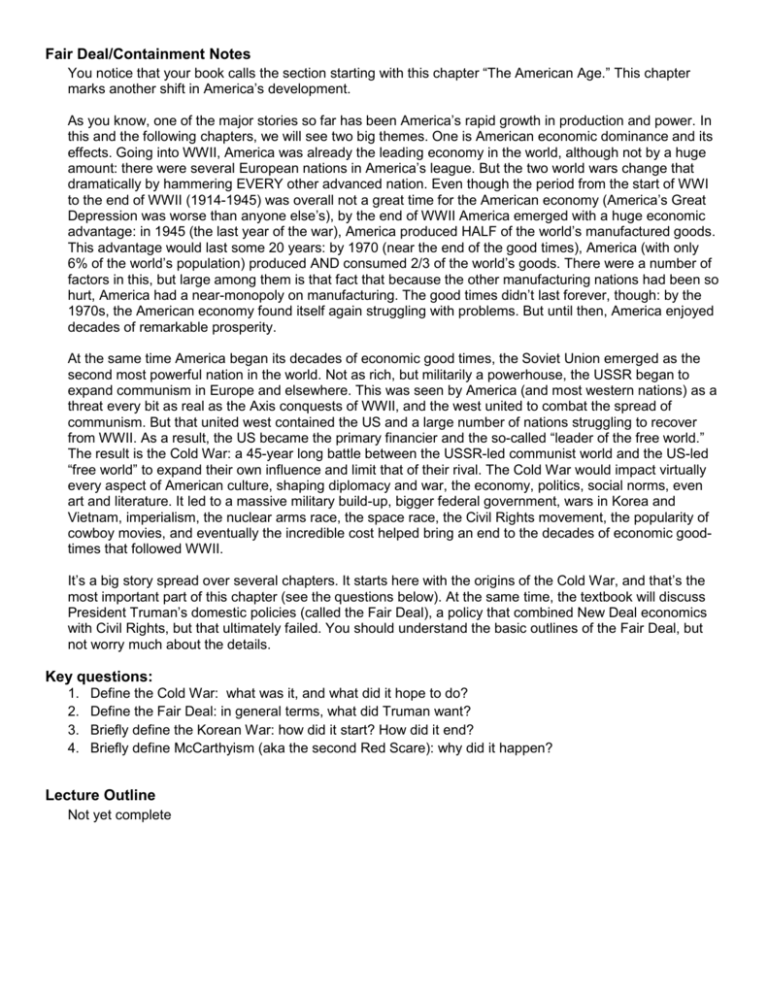
Fair Deal/Containment Notes You notice that your book calls the section starting with this chapter “The American Age.” This chapter marks another shift in America’s development. As you know, one of the major stories so far has been America’s rapid growth in production and power. In this and the following chapters, we will see two big themes. One is American economic dominance and its effects. Going into WWII, America was already the leading economy in the world, although not by a huge amount: there were several European nations in America’s league. But the two world wars change that dramatically by hammering EVERY other advanced nation. Even though the period from the start of WWI to the end of WWII (1914-1945) was overall not a great time for the American economy (America’s Great Depression was worse than anyone else’s), by the end of WWII America emerged with a huge economic advantage: in 1945 (the last year of the war), America produced HALF of the world’s manufactured goods. This advantage would last some 20 years: by 1970 (near the end of the good times), America (with only 6% of the world’s population) produced AND consumed 2/3 of the world’s goods. There were a number of factors in this, but large among them is that fact that because the other manufacturing nations had been so hurt, America had a near-monopoly on manufacturing. The good times didn’t last forever, though: by the 1970s, the American economy found itself again struggling with problems. But until then, America enjoyed decades of remarkable prosperity. At the same time America began its decades of economic good times, the Soviet Union emerged as the second most powerful nation in the world. Not as rich, but militarily a powerhouse, the USSR began to expand communism in Europe and elsewhere. This was seen by America (and most western nations) as a threat every bit as real as the Axis conquests of WWII, and the west united to combat the spread of communism. But that united west contained the US and a large number of nations struggling to recover from WWII. As a result, the US became the primary financier and the so-called “leader of the free world.” The result is the Cold War: a 45-year long battle between the USSR-led communist world and the US-led “free world” to expand their own influence and limit that of their rival. The Cold War would impact virtually every aspect of American culture, shaping diplomacy and war, the economy, politics, social norms, even art and literature. It led to a massive military build-up, bigger federal government, wars in Korea and Vietnam, imperialism, the nuclear arms race, the space race, the Civil Rights movement, the popularity of cowboy movies, and eventually the incredible cost helped bring an end to the decades of economic goodtimes that followed WWII. It’s a big story spread over several chapters. It starts here with the origins of the Cold War, and that’s the most important part of this chapter (see the questions below). At the same time, the textbook will discuss President Truman’s domestic policies (called the Fair Deal), a policy that combined New Deal economics with Civil Rights, but that ultimately failed. You should understand the basic outlines of the Fair Deal, but not worry much about the details. Key questions: 1. 2. 3. 4. Define the Cold War: what was it, and what did it hope to do? Define the Fair Deal: in general terms, what did Truman want? Briefly define the Korean War: how did it start? How did it end? Briefly define McCarthyism (aka the second Red Scare): why did it happen? Lecture Outline Not yet complete
